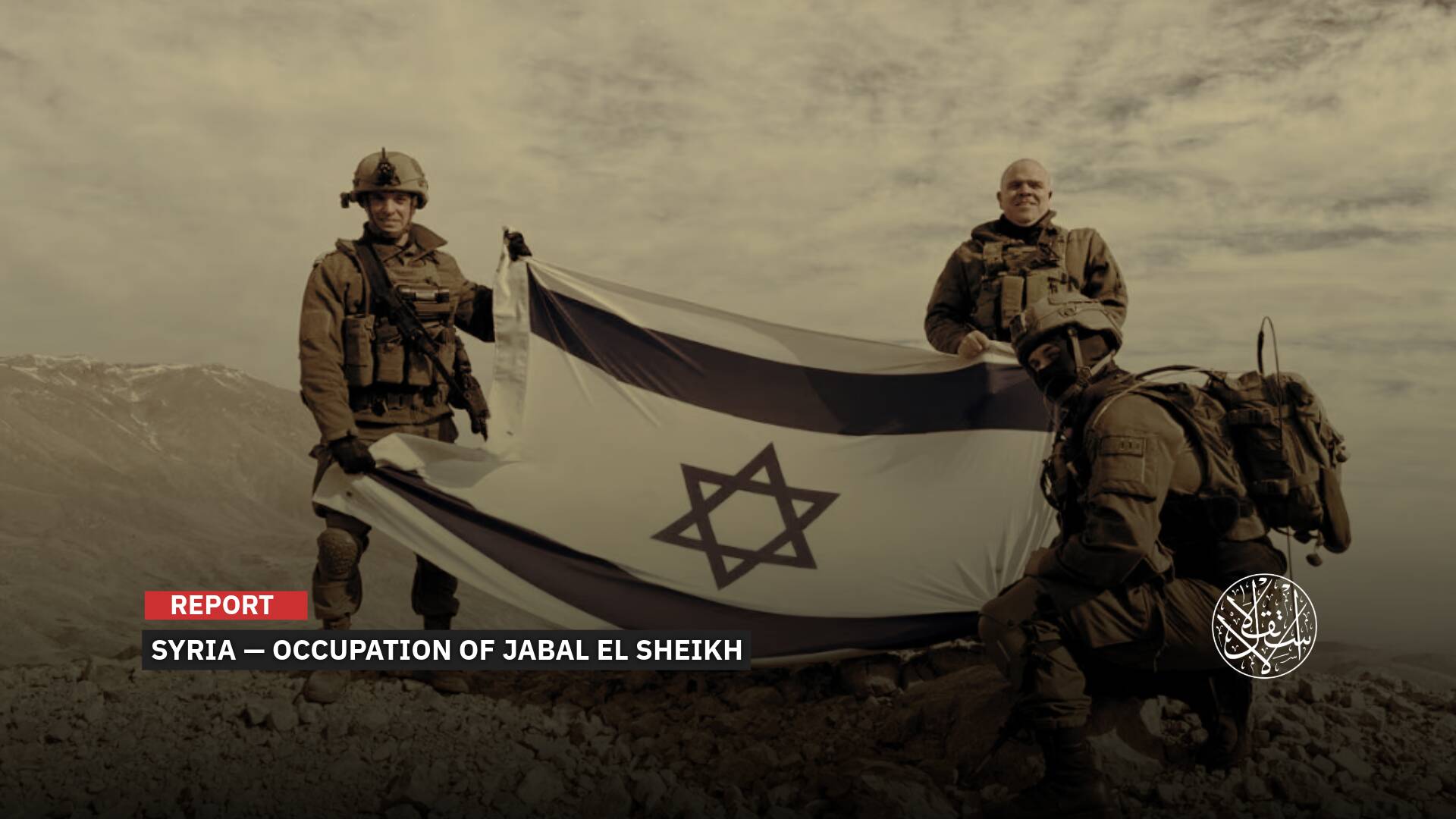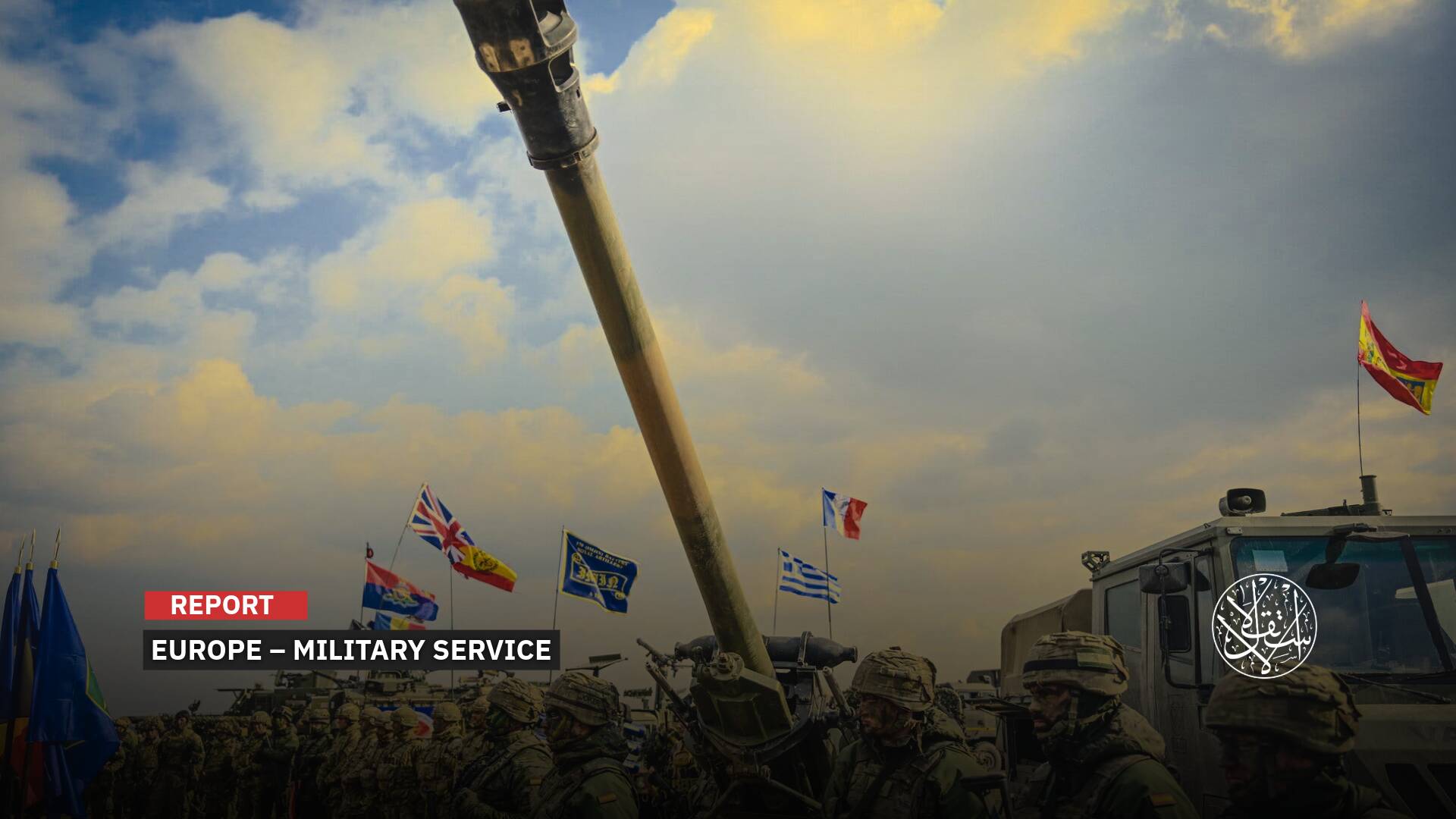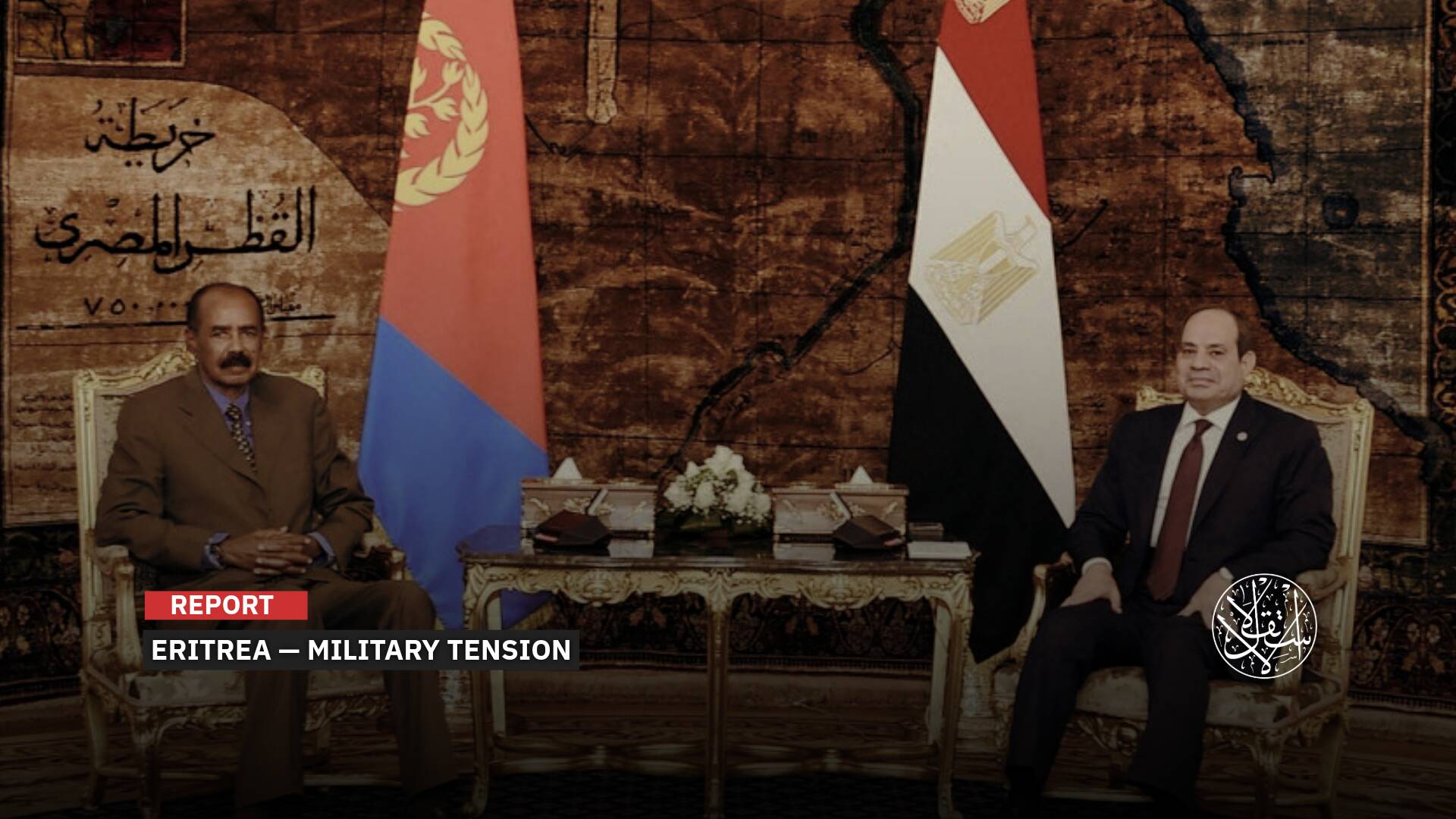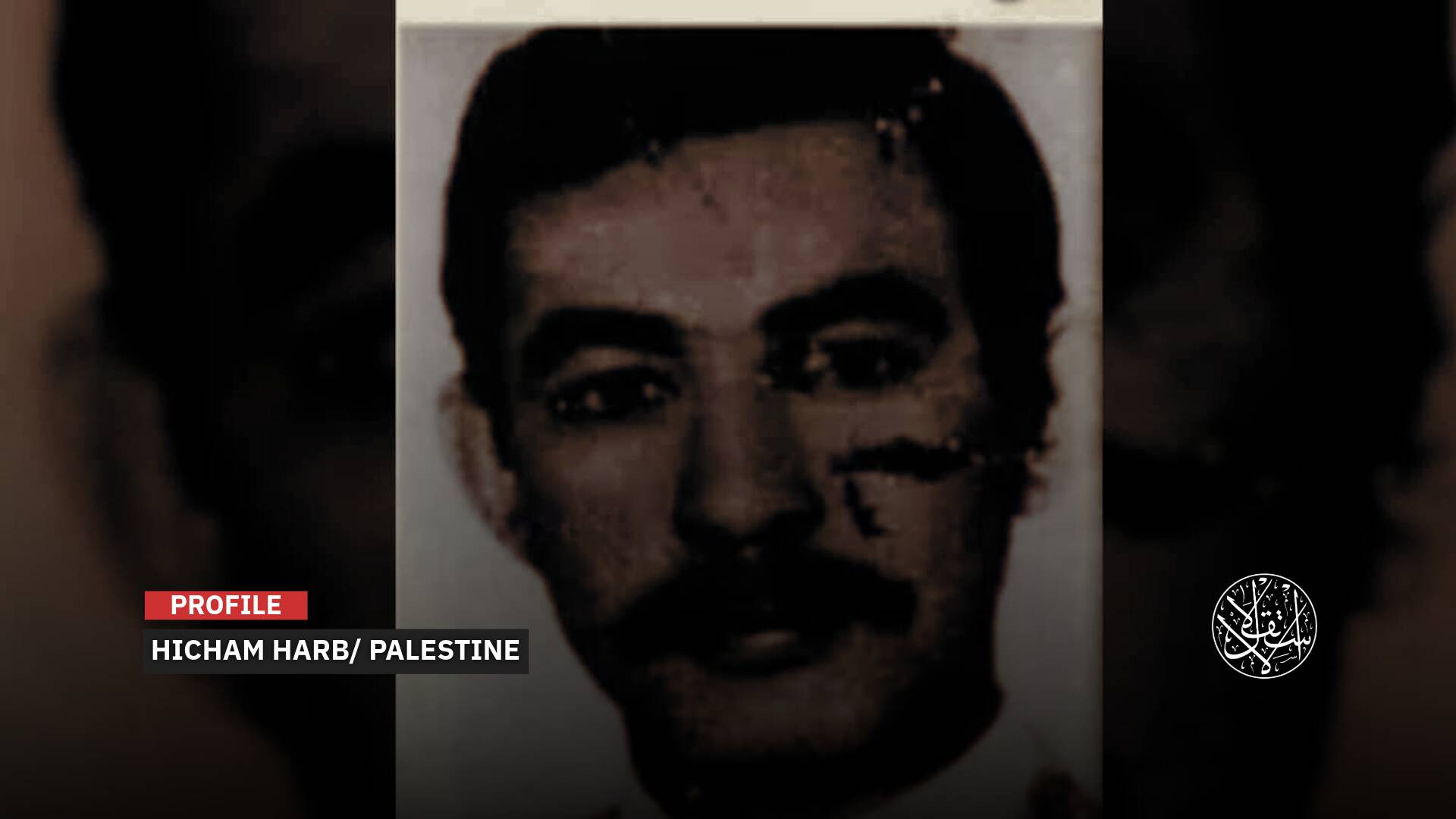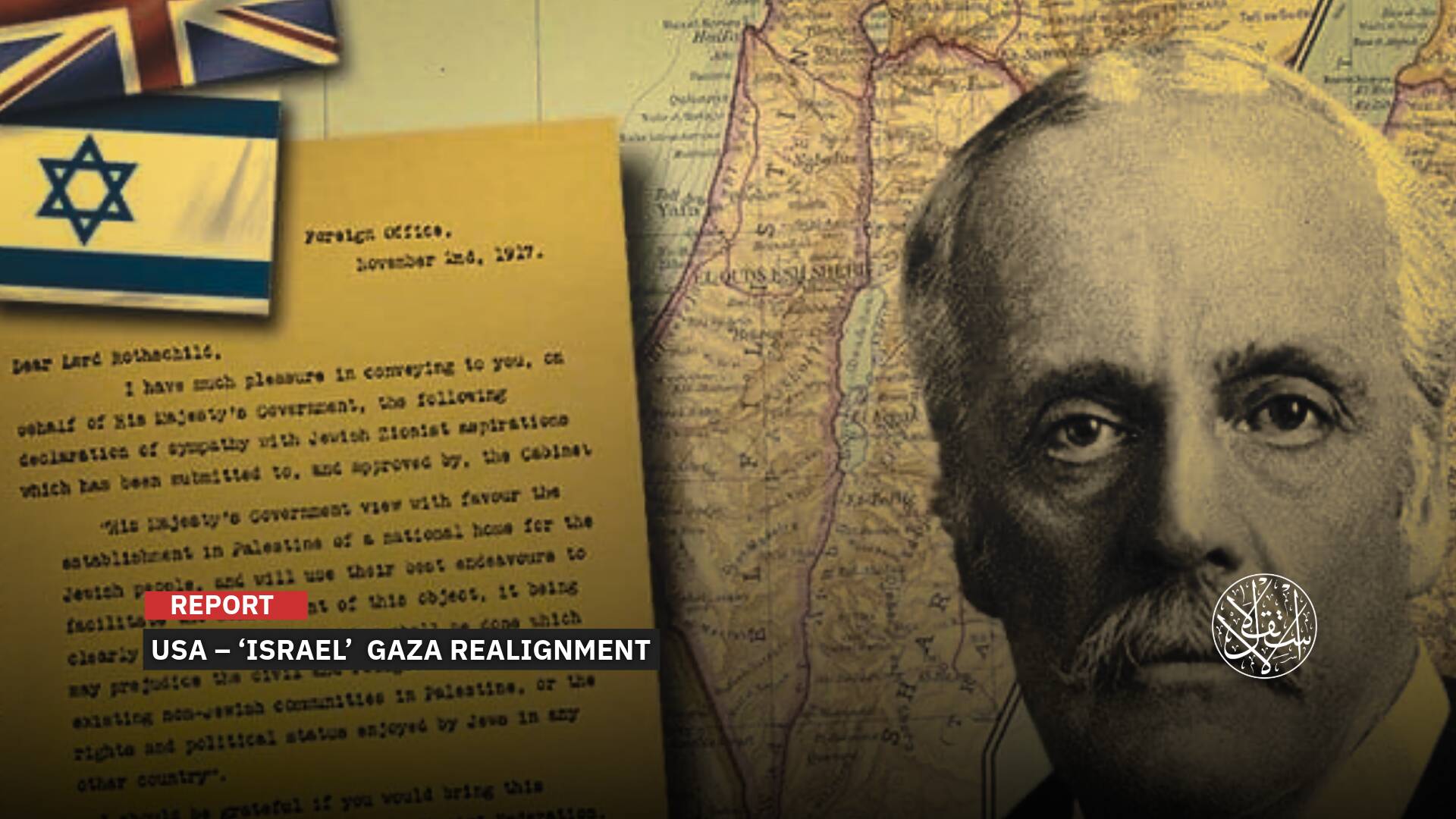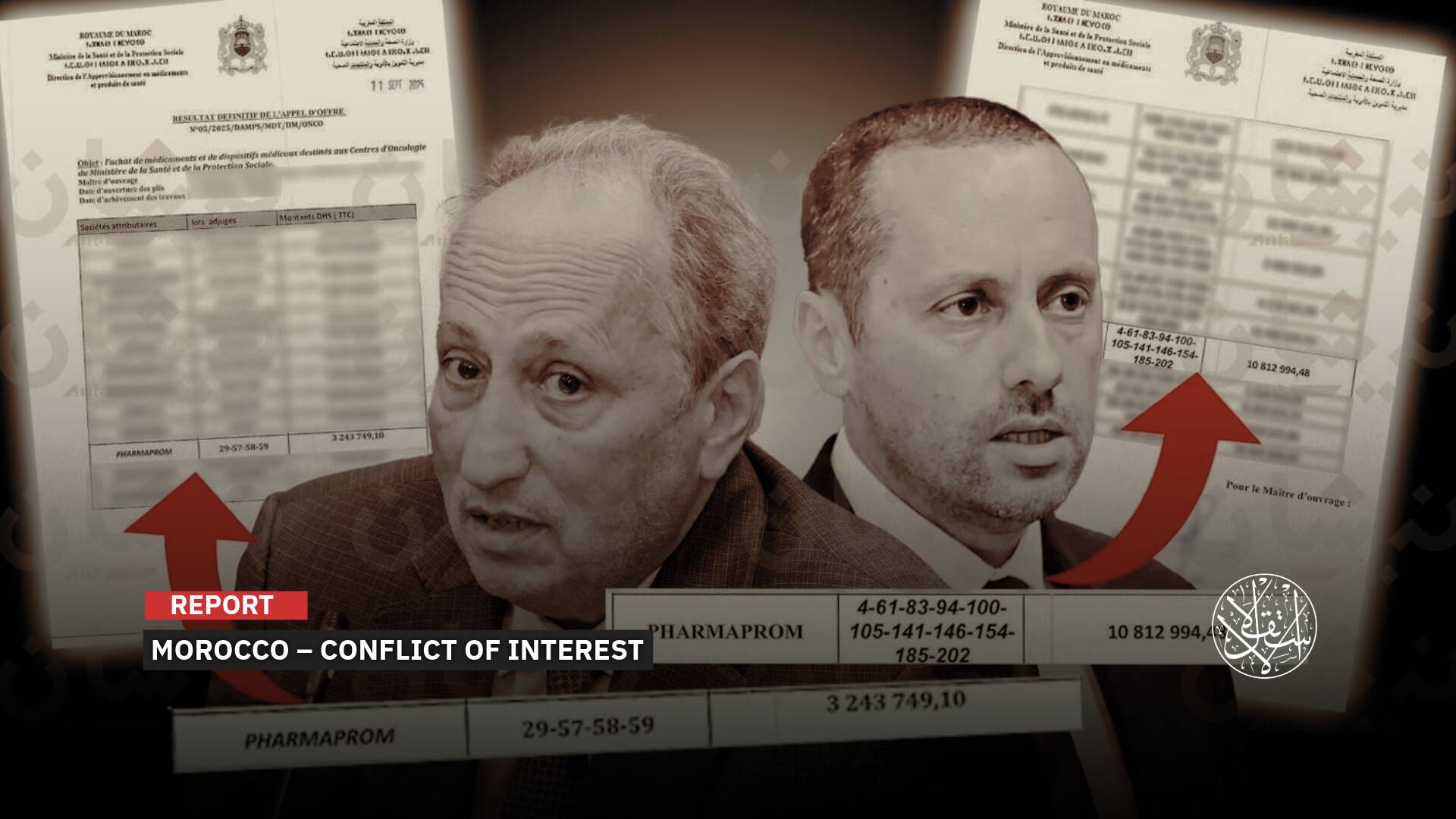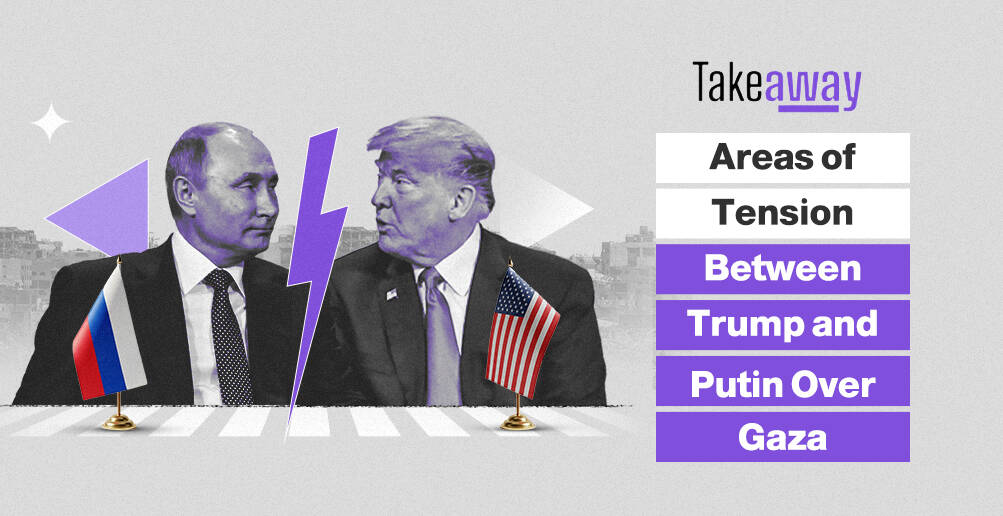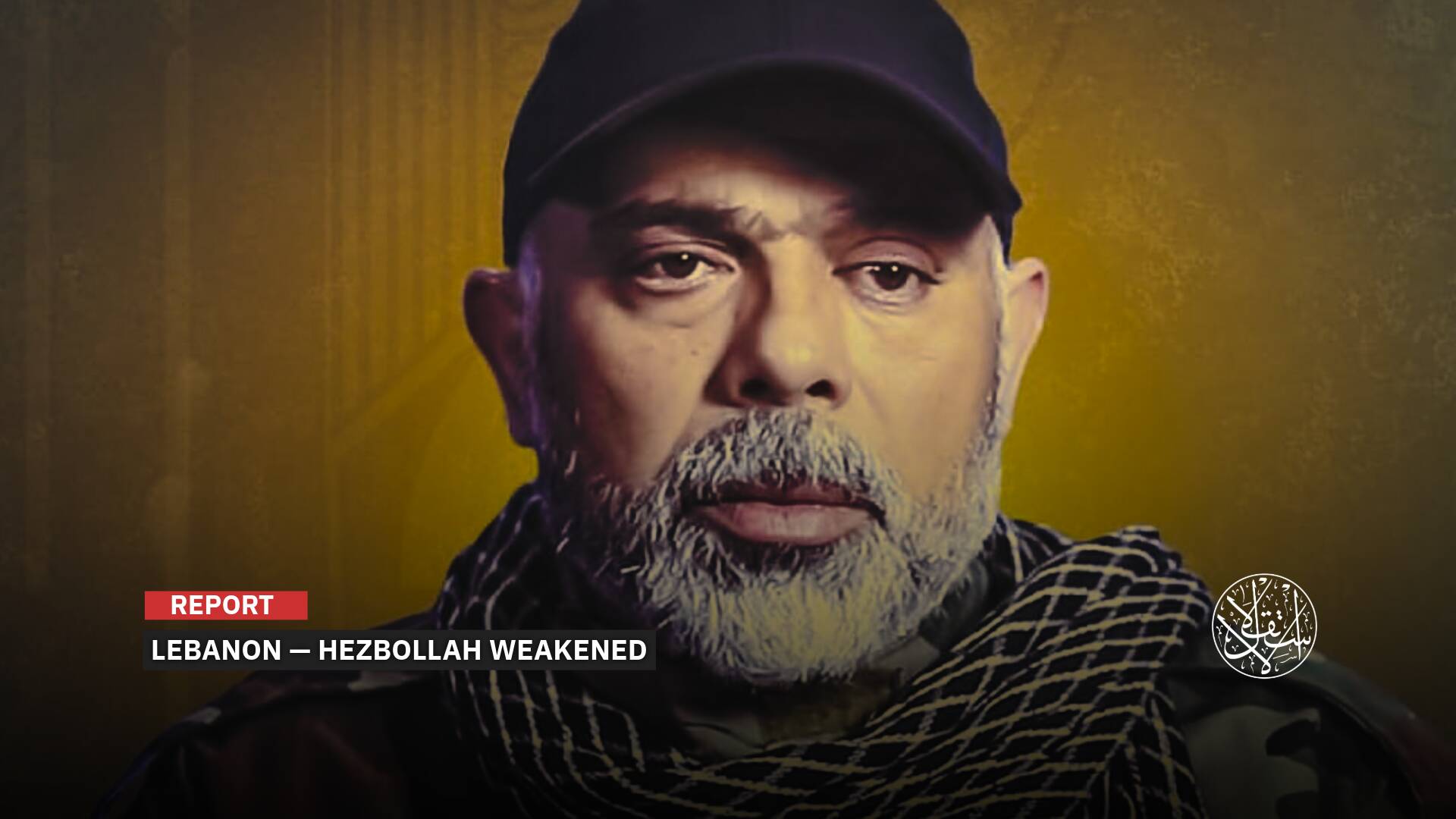Why Does ‘Israel’ See U.S. Aid Centers as a Model for the 'Day After' in Gaza?

"The American company is a cover for Israeli Occupation military objectives."
Despite a sea of spilled blood, thousands of Palestinians still line up daily at U.S.-run aid centers—known grimly by many as “death traps”—hoping for a bag of flour or a portion of food to keep their families alive.
These “deadly” aid deliveries are keeping Palestinians and their families alive, after hundreds, most of them children, have died of hunger as a result of “Israel’s” tightened siege on Gaza, alongside the brutal bombardment targeting shelters, tents, and homes.
Aid Soaked in Blood
“Israel” is exploiting the Palestinians’ suffering—and its own killing of them through bombardment, sniping, and starvation—to push forward a project aimed at imposing a new reality in Gaza. At the center of this plan is the so-called Gaza Humanitarian Foundation, which is being positioned as a substitute for Hamas or any other Palestinian authority and is tasked with overseeing a wide-scale displacement and demographic reengineering effort.
The U.S.-founded Gaza Humanitarian Foundation—an organization surrounded by growing suspicion—was established in February 2025 and began operating in Gaza by May of that year. Claiming to “alleviate hunger” in the Strip by delivering aid while ensuring it does not “fall into the hands of Hamas,” the group set up its headquarters in Geneva, Switzerland.
Since its launch, the foundation has been linked to the deaths of 751 Palestinians, shot by Israeli Occupation forces during aid distributions, alongside 4,931 injuries and 39 missing individuals. Over time, the deeper motives behind the foundation’s creation have started to surface.
A July 6, 2025 investigation by the Financial Times revealed that the Boston Consulting Group (BCG), one of the world’s largest consulting firms, was involved in designing a financial model aimed at forcibly displacing Gaza’s population as part of a demographic-cleansing scheme.
This was part of a covert initiative called “Project Aurora,” which outlined the displacement of more than half a million Palestinians in exchange for so-called relocation packages funded by external parties. The project, in which BCG participated over seven months (October 2024 to May 2025), reportedly cost over $4 million.
According to the model, the forced displacement of 500,000 Palestinians would cost approximately $5 billion—about $9,000 per person—offering to relocate them to alternative areas either within or outside Gaza.
As the foundation’s real objectives became clearer, more than 130 international humanitarian organizations declared they would not cooperate with the Gaza Humanitarian Foundation, describing it as “a front for Israeli military objectives,” according to official UN and NGO assessments.
On May 10, 2025, the United Nations warned that “Israel” was using aid in Gaza as “bait” to force Palestinians to evacuate their communities, particularly from the north of the Strip to the south.
UNICEF issued a statement the same day, saying that a detailed review of “Israel’s” aid proposal to the humanitarian community found that it violated core humanitarian principles, including the use of facial recognition technology as a precondition for receiving aid.
The agency voiced serious concerns over this practice, stressing that monitoring and screening recipients for military or intelligence purposes violates all humanitarian standards.

Possible Failure Ahead
Palestinian researcher Abdullah al-Kassab argues that Prime Minister Benjamin Netanyahu views the Gaza Humanitarian Foundation as his gateway to dismantling Hamas rule and replacing it with a U.S.-backed civilian front underpinned by Israeli military control. The larger objective, he says, is to engineer a dramatic demographic shift by displacing large portions of Gaza’s population and advancing long-term policies that render the territory unlivable.
“Controlling food distribution in Gaza is just the first step. What follows is a gradual transformation of these aid centers into de facto civilian and administrative authorities controlling daily life in the Strip,” he told Al-Estiklal.
“Over time, Israel will likely expand the powers of these centers, upgrading their facilities and embedding them more deeply into Gaza’s governance.”
“What Netanyahu envisions,” al-Kassab added, “is effectively a new local government for Gaza—one that serves Israeli Occupation strategic interests,” according to the researcher.
“Israel’s insistence on propping up this specific organization—while rejecting other options, such as reinstating the Palestinian Authority, deploying Arab peacekeeping forces, or even allowing Egypt to take the lead—signals Netanyahu’s commitment to a militarized and semi-direct civil control model.”
“In parallel to this relief infrastructure,” he said, “Israel has also assembled and armed local militias, tasking them with targeting resistance fighters, uncovering hidden ambushes, and recovering the remains of captured soldiers.”
These militias, al-Kassab asserts, have betrayed the Palestinian people and operate in coordination with Shin Bet, “Israel’s” internal security service. “They may well be the foundation of future proxy security agencies, run directly by Israeli intelligence.”
Yet despite this “well-developed scheme,” al-Kassab believes the plot faces a high risk of failure. “Palestinians in Gaza are well aware of the manipulation. The only reason they risk approaching these aid centers—despite the very real danger—is sheer starvation. Once the border crossings reopen and goods begin flowing again, the entire equation will shift.”
On June 4, 2025, the Israeli government approved a transfer of roughly 700 million shekels (about $209 million) to fund its Gaza humanitarian aid mechanism. According to Israel’s Channel 11, the funding was quietly authorized under a vague line item labeled “security system allocations,” with no disclosure of the recipient or intended use—an approach often used to mask controversial military expenditures.
The report revealed that the ambiguous language was deliberately chosen to conceal the fact that the funds are being funneled to support the aid distribution system in Gaza, which operates in coordination with the United States.

Security Chaos
In May 2025, far-right Finance Minister Bezalel Smotrich declared that starting direct aid distribution in Gaza through the U.S.-backed company marked “a turning point in the war that will lead to victory and the destruction of Hamas.”
Meanwhile, Knesset member Almog Cohen stated that humanitarian aid “serves as a tool to evacuate Gaza residents from parts of the Strip,” according to Israel’s Channel 14.
Israeli affairs expert Saleh Ibrahim told Al-Estiklal that the U.S. aid model represents the “day after” the Israeli Occupation envisions—essentially a project masterminded by Netanyahu and his extremist minister Smotrich, in partnership with the U.S. administration.
“Through this plan and the aid centers, the Israeli Occupation seeks to eliminate any role for Hamas or the Palestinian Authority in Gaza, while also sidelining UNRWA and other international agencies operating there,” he said.
“Israel aims to monopolize control over Gaza’s population, creating a civilian—and possibly security—alternative inside the Strip that prevents any return to the pre-October 7, 2023 status quo.”
“Israel is pursuing a long-term policy, self-funding these centers’ operations and development, which will continue even if a ceasefire or end to the war is reached,” Ibrahim added.
With full control over the crossings, he noted, “the Israeli army can engineer famine at will, forcing Palestinians toward these aid centers when food is unavailable elsewhere.”
“This tactic,” Ibrahim warned, “will also be part of the displacement plan.”
He described the strategy: “Initially, food supplies are cut off to Gaza residents, especially in the north, compelling them to move southward to the nearest aid center. Then, food aid is deliberately reduced, maintaining only minimal levels of food and medicine—the standards Smotrich promised to enforce.”
“This approach is designed to prepare Gazans over time for forced displacement outside the Strip, compounded by security chaos, delays in reconstruction, and the disruption of basic life services.”
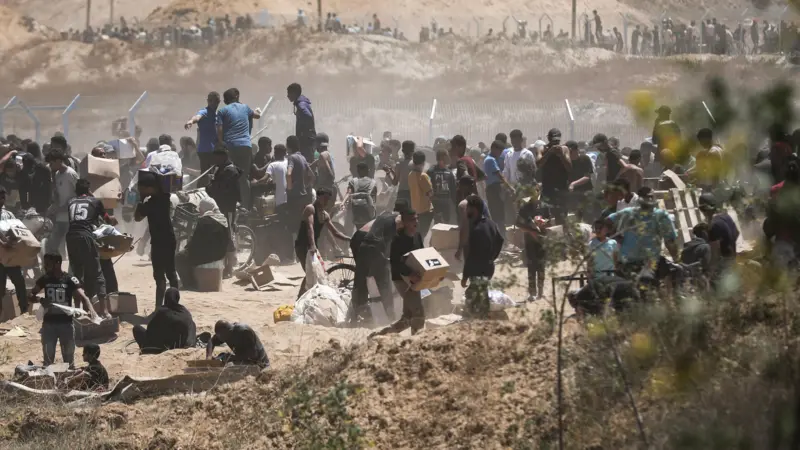
A Tool for ‘Recruitment’
On July 3, 2025, Gaza’s Palestinian Ministry of Interior revealed that the Gaza Humanitarian Foundation, together with officers from the Israeli Occupation army, has been recruiting Palestinians under the pretense of logistical and security roles. The ministry warned that “all collaborators will be held accountable.”
Meanwhile, the Resistance Security Service cautioned that one of the charity’s key objectives is to infiltrate Palestinian society both psychologically and security-wise. They conduct tests to assess individuals’ susceptibility to pressure and recruitment, especially amid the dire economic conditions and growing desperation for food and water.
“I have visited the U.S. aid centers several times in central Gaza near the Netzarim checkpoint. Driven by hunger, I took this deadly risk since my family, living in a tent west of Gaza City, has no food and no source of income,” Mohamed Awad, a young resident of Gaza, described his experience to Al-Estiklal.
“I walk several kilometers daily from the north to reach Netzarim, hoping to get aid. Near the gates, horrific scenes unfold—Israeli Occupation forces shoot wildly at the heads and chests of those seeking assistance.”
He added that the gates open only rarely, with a mere 500 food parcels available for tens of thousands of desperate people.
Awad revealed that the Israeli Occupation has installed cameras everywhere in these centers, including large ones, and a prominent facial recognition device at the entrance. Many aid seekers are arrested; some are pressured into becoming informants, others are interrogated about wanted individuals, and those who refuse face execution.
“Once, my friend and I went to the aid center at Netzarim. After entering, one of the American company’s armed men—speaking Arabic with an Iraqi or Gulf accent—called my friend to a different gate and then disappeared. It has been more than three weeks with no news of him.”
Sources
- Palestinians condemn plan modelled by US firm to forcibly displace Gazans
- Gaza: UN agencies reject Israeli plan to use aid as ‘bait’
- Statement No. 884 | Gaza Government Media Office Refutes U.S. Claims of 'Alleged Attack' at Aid Distribution Centers [Arabic]
- Israel “won’t commit suicide”, says the government’s ideologue
- Deputy Minister and Knesset Member Almog Cohen stated bluntly: “When I speak of revenge against Gazans for what they did to us, I mean real revenge.” [Arabic]


